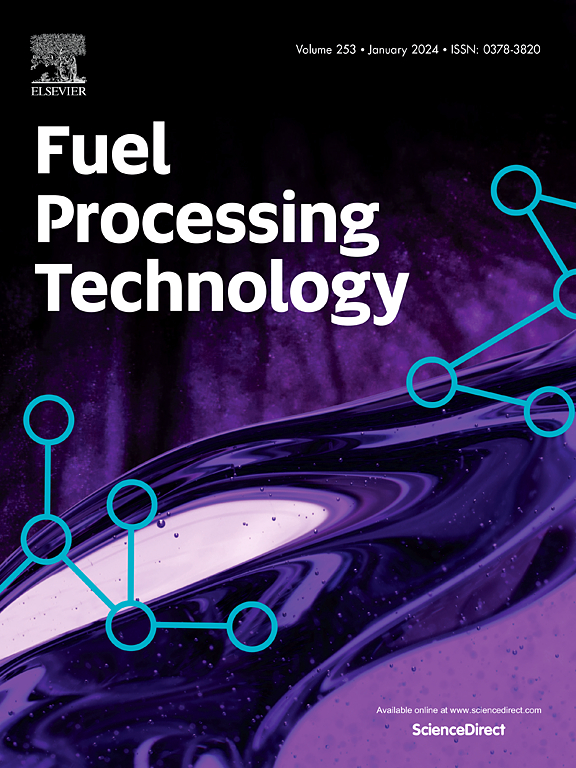Comparative analysis of covalent bond cleavage and free radical behavior during the heating process in direct coal liquefaction of Naomaohu and Shangwan coals
IF 7.7
2区 工程技术
Q1 CHEMISTRY, APPLIED
引用次数: 0
Abstract
The cleavage of covalent bonds and the generation of radicals play a crucial role in product distribution during direct coal liquefaction (DCL). This paper systematically investigates the mechanisms of covalent bond cleavage and the behavior of free radical generation for Naomaohu (NMHC) and Shangwan (SWC) coals during the DCL process. The concentrations of eight typical covalent bonds in raw coal and in the solid products Asphaltene (ASP) and Residue (Re) were quantified using 13C NMR, while information on free radicals was obtained through GC–MS and GC analyses. The results indicate that NMHC contains a higher concentration of easily cleavable covalent bonds, such as Cal-O and Cal-Cal, endowing it with superior reactivity compared to SWC. During the heating process, the breaking rate of Cal-Cal bonds in the ASPNMHC and ReNMHC being 3.0 times higher than those in SWC. Additionally, the proportion of aromatic radicals in OilNMHC is 19.1 % lower than that in OilSWC. This study systematically investigates the differences in reactive behavior between NMHC and SWC, emphasizing the core chemical reactions involved in DCL. It provides a theoretical foundation for developing an efficient direct liquefaction process for NMHC, oil-rich coal.
直毛湖煤和上湾煤直接液化加热过程中共价键裂解和自由基行为的对比分析
煤直接液化过程中共价键的断裂和自由基的生成对产物分布起着至关重要的作用。本文系统地研究了直毛湖煤(NMHC)和上湾煤(SWC)在DCL过程中的共价键裂解机理和自由基生成行为。采用13C NMR对原煤和固体产物沥青烯(ASP)和渣油(Re)中8种典型共价键的浓度进行了定量分析,并通过GC - ms和GC分析获得了自由基的信息。结果表明,与SWC相比,NMHC含有更高浓度的易于切割的共价键,如Cal-O和Cal-Cal,使其具有更强的反应活性。在加热过程中,ASPNMHC和ReNMHC的Cal-Cal键断裂率是SWC的3.0倍。此外,OilNMHC中芳香族自由基的比例比OilSWC低19.1%。本研究系统探讨了NMHC和SWC在反应行为上的差异,重点研究了DCL中涉及的核心化学反应。为开发高效的NMHC富油煤直接液化工艺提供了理论基础。
本文章由计算机程序翻译,如有差异,请以英文原文为准。
求助全文
约1分钟内获得全文
求助全文
来源期刊

Fuel Processing Technology
工程技术-工程:化工
CiteScore
13.20
自引率
9.30%
发文量
398
审稿时长
26 days
期刊介绍:
Fuel Processing Technology (FPT) deals with the scientific and technological aspects of converting fossil and renewable resources to clean fuels, value-added chemicals, fuel-related advanced carbon materials and by-products. In addition to the traditional non-nuclear fossil fuels, biomass and wastes, papers on the integration of renewables such as solar and wind energy and energy storage into the fuel processing processes, as well as papers on the production and conversion of non-carbon-containing fuels such as hydrogen and ammonia, are also welcome. While chemical conversion is emphasized, papers on advanced physical conversion processes are also considered for publication in FPT. Papers on the fundamental aspects of fuel structure and properties will also be considered.
 求助内容:
求助内容: 应助结果提醒方式:
应助结果提醒方式:


